Antithrombin Market – Industry Analysis, Trends, and Growth Outlook
Introduction
The Global Antithrombin Market has witnessed significant growth in recent years, driven by increasing demand for advanced therapies to manage coagulation disorders and thrombotic conditions. Antithrombin, a naturally occurring protein in human plasma, plays a crucial role in regulating blood clot formation by inhibiting enzymes such as thrombin and factor Xa. It is a vital therapeutic agent in conditions like hereditary antithrombin deficiency, disseminated intravascular coagulation (DIC), and during surgical procedures such as cardiopulmonary bypass and childbirth in patients with clotting abnormalities.
As global awareness of rare coagulation disorders increases and biotechnology innovations accelerate, the Antithrombin Market is poised for strong growth. With both plasma-derived and recombinant forms available, the market continues to evolve through scientific advancements, enhanced purification technologies, and expanding medical applications across various healthcare settings.
Review comprehensive data and projections in our Global Antithrombin Market report.
Download now: https://www.databridgemarketresearch.com/reports/global-antithrombin-market
Market Definition and Dynamics
The Global Antithrombin Market encompasses products derived from both human plasma and recombinant DNA technology used in clinical and research settings. It includes therapies aimed at preventing thrombosis, supporting anticoagulant management, and providing supplementation for patients with antithrombin deficiency.
Market Drivers
Rising Prevalence of Coagulation Disorders: Increasing awareness and diagnosis of conditions like deep vein thrombosis, pulmonary embolism, and hereditary deficiencies have driven the need for effective antithrombin therapies.
Growing Demand for Recombinant Products: Recombinant antithrombin eliminates risks related to plasma sourcing, such as viral contamination, making it a safer and more scalable alternative.
Advancements in Biotechnology: Innovations in recombinant DNA technology and purification methods have improved yield, safety, and efficacy of therapeutic products.
Increased Surgical and Obstetric Applications: Antithrombin is widely used in major surgeries and childbirth to prevent thromboembolic complications, expanding its clinical relevance.
Market Restraints
High Production Costs: The purification and recombinant manufacturing processes are complex and costly.
Regulatory Challenges: Stringent approval procedures for biologics often slow down market entry for new formulations.
Limited Awareness in Developing Regions: Many healthcare systems lack diagnostic infrastructure to detect antithrombin deficiencies early.
Market Opportunities
Expansion in Emerging Economies: Growing healthcare investments and biotechnology capacity in Asia-Pacific and Latin America offer significant market potential.
Technological Innovations: Continued R&D in recombinant protein synthesis and plasma fractionation could enhance product affordability and accessibility.
Strategic Collaborations: Partnerships among pharmaceutical firms and biotech companies are fostering research breakthroughs and accelerating clinical trials.
Market Segmentation Analysis
The Antithrombin Market can be segmented based on product type, application, source, and end user, each showing unique growth dynamics.
By Product Type
Plasma-Derived Antithrombin: Traditional form sourced from human plasma; widely used in clinical applications due to proven efficacy.
Recombinant Antithrombin: Produced through genetic engineering in transgenic systems, offering improved safety and consistency.
By Application
Therapeutics: For managing antithrombin deficiency, thrombosis prevention, and support during surgery.
Diagnostics: Utilized in coagulation testing and laboratory analysis.
Research: Used in preclinical and clinical research for studying coagulation pathways.
By Source
Human Plasma-Derived: Collected and processed from donors under strict regulatory oversight.
Genetically Engineered (Recombinant): Produced using advanced biotechnology in mammalian cell or transgenic expression systems.
By End User
Hospitals and Clinics: Major consumers for treatment of critical conditions.
Research Laboratories: Use in R&D and drug development studies.
Pharmaceutical and Biotech Companies: For product development and clinical trial supply.
Regional Insights
North America
North America dominates the Global Antithrombin Market owing to high prevalence of thrombosis-related conditions, advanced healthcare infrastructure, and strong biopharmaceutical R&D investments. The presence of leading biotechnology firms and government funding for rare disease therapies further strengthens the market position.
Europe
Europe holds a significant share due to its robust regulatory framework, advanced plasma fractionation facilities, and extensive clinical research. Increased adoption of recombinant antithrombin products and rising public awareness about genetic disorders have accelerated market demand.
Asia-Pacific
The Asia-Pacific region is witnessing the fastest growth, driven by rising healthcare expenditure, growing awareness of anticoagulant therapies, and expansion of local biotechnology industries. Countries such as China, India, and Japan are investing heavily in biosimilar and plasma product manufacturing.
Latin America, Middle East, and Africa
These regions represent emerging markets with untapped potential. While adoption is still limited due to cost and infrastructure constraints, increasing healthcare modernization and international partnerships are expected to improve accessibility and growth in the coming years.
Competitive Landscape
The Global Antithrombin Market features a mix of established biopharmaceutical companies and emerging biotechnology players.
Key competitive factors include innovation in recombinant technologies, production scalability, and product safety.
Product Development: Companies are focusing on creating high-purity, longer-acting antithrombin formulations.
Collaborations and Acquisitions: Strategic alliances enhance research capabilities and expand product portfolios.
Clinical Research: Firms are investing in studies that validate the efficacy of recombinant antithrombin in broader therapeutic areas, including sepsis and organ transplantation.
The competitive landscape remains moderately consolidated, with increasing focus on automation, bioengineering, and recombinant product pipelines.
Technological Advancements
Recent years have seen substantial technological progress in antithrombin production:
Recombinant DNA Technology: Enables large-scale, contamination-free production using transgenic animals or cell cultures.
Improved Purification Systems: Advanced chromatographic and filtration methods enhance product quality and yield.
Automation in Manufacturing: Modern bioprocessing equipment reduces human error and production variability.
Gene-Editing Tools: CRISPR-based research has opened possibilities for improving transgenic animal efficiency and therapeutic consistency.
These innovations are making antithrombin therapies more accessible and economically viable across global markets.
Market Trends and Future Outlook
Several emerging trends are shaping the future of the Antithrombin Market:
Shift Toward Recombinant Products: Driven by safety, consistency, and scalability advantages.
Integration of AI in Biomanufacturing: Enhances quality control and process optimization.
Personalized Medicine: Growing interest in tailoring antithrombin therapy based on genetic profiles.
Expansion in Clinical Indications: Research exploring antithrombin use in cardiovascular and inflammatory diseases.
Sustainable Plasma Sourcing: Ethical sourcing practices and green manufacturing gaining traction.
The market outlook for the next decade appears promising, with continued growth driven by biotechnology expansion, rising healthcare awareness, and global R&D collaboration.
Impact of Global Factors
Global factors such as pandemics, supply chain disruptions, and regulatory reforms have influenced market growth patterns.
Pandemic Effects: COVID-19 temporarily affected plasma collection but highlighted the importance of biologics and recombinant therapies.
Regulatory Harmonization: Global efforts to standardize biologic drug approval processes are facilitating faster market access.
Sustainability Focus: Companies are adopting ethical sourcing and green manufacturing practices to align with global sustainability goals.
As healthcare systems recover and adapt, the antithrombin market is expected to maintain upward momentum supported by innovation and increased accessibility.
Conclusion
The Global Antithrombin Market is poised for sustained expansion, driven by medical advancements, rising demand for recombinant biologics, and increasing awareness of coagulation disorders. The shift toward safer and more efficient production technologies will continue to redefine the competitive landscape.
With growing healthcare investments across emerging economies and ongoing innovation in biomanufacturing, the market offers promising opportunities for both established players and new entrants. Antithrombin’s critical role in therapeutic and surgical applications ensures it will remain a cornerstone in modern anticoagulant therapy and biotechnology research for years to come.
Frequently Asked Questions (FAQ)
- What is Antithrombin?
Antithrombin is a plasma protein that helps prevent excessive blood clotting by inhibiting enzymes like thrombin and factor Xa. It is used therapeutically to manage conditions related to clotting disorders. - What are the main types of Antithrombin products?
The market includes plasma-derived antithrombinand recombinant antithrombin, with the latter produced using genetic engineering for enhanced safety and purity. - Which regions are leading in Antithrombin Market growth?
North America and Europe currently lead, while Asia-Pacific shows the fastest growth due to rising healthcare investment and technological progress. - What factors are driving market growth?
Rising cases of coagulation disorders, increased use in surgical procedures, and advancements in recombinant technology are key growth drivers. - What challenges does the market face?
High production costs, complex regulatory approval processes, and limited awareness in developing regions remain major challenges. - How will technology influence the future of this market?
Technological innovations like recombinant DNA, gene editing, and automation are expected to enhance production efficiency, safety, and affordability. - What is the future outlook for the Global Antithrombin Market?
The market is projected to expand steadily over the next decade, driven by increasing demand for biologics, improved healthcare access, and growing research applications.
Browse More Reports:
Global Pea Starch for Food Industry Market
Global Pemphigus Vulgaris Market
Global Perfluoropolyether Market
Global Perioral Dermatitis Treatment Market
Global Peripartum Cardiomyopathy Market
Global Personal Care Specialty Ingredient Market
Global Pet Toys and Training Market
Global Pharmaceutical Polymer Vials Market
Global Pharmaceutical Quality Control Market
Global Phthalimide Market
Global Physiotherapy Tapes and Bandages Market
Global Plant-Based Cheese Market
Global Plant-Based Textile Yarn Market
Global Plant-Derived and Synthetic Sugar Market
Global Plastic Antioxidant Market
About Data Bridge Market Research:
An absolute way to forecast what the future holds is to comprehend the trend today!
Data Bridge Market Research set forth itself as an unconventional and neoteric market research and consulting firm with an unparalleled level of resilience and integrated approaches. We are determined to unearth the best market opportunities and foster efficient information for your business to thrive in the market. Data Bridge endeavors to provide appropriate solutions to the complex business challenges and initiates an effortless decision-making process. Data Bridge is an aftermath of sheer wisdom and experience which was formulated and framed in the year 2015 in Pune.
Contact Us:
Data Bridge Market Research
US: +1 614 591 3140
UK: +44 845 154 9652
APAC : +653 1251 975
Email:- corporatesales@databridgemarketresearch.com
- الاقتصاد والتجارة
- فن
- كورسات
- الحرف اليدوية
- الطعام والشراب
- الألعاب والترفيه
- الصحة
- تكنولوجيا
- أخرى
- دين
- رياضة


